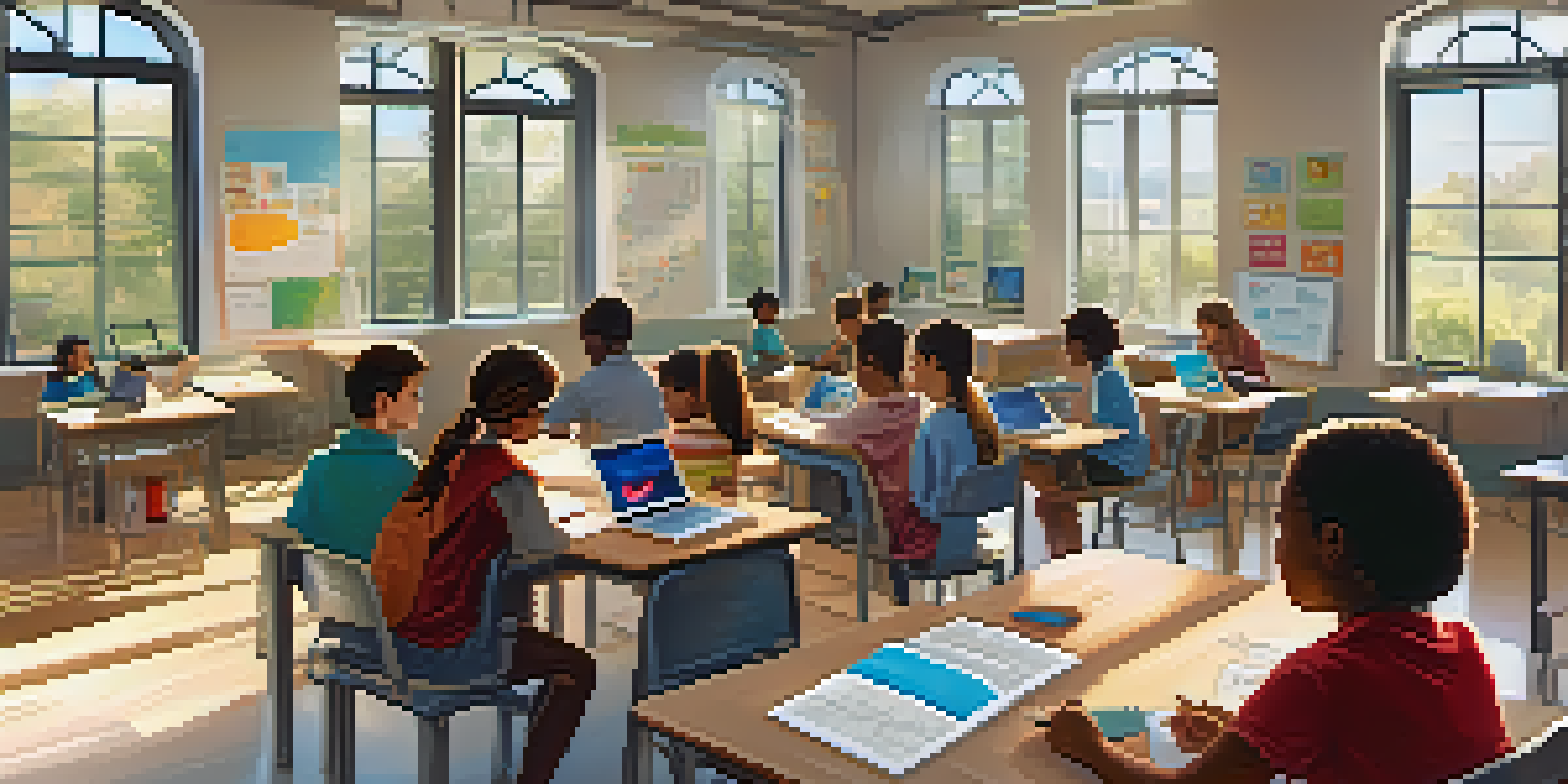Enhancing Digital Literacy Through Neuroscience Insights

Understanding Digital Literacy in Today's World
Digital literacy is more than just knowing how to use a computer; it encompasses a range of skills, including critical thinking, information evaluation, and online communication. In an age where information is abundant and often misleading, developing these skills is crucial for navigating our digital landscape. By understanding what digital literacy truly means, we can better equip ourselves and others to thrive online.
In a world where information is at our fingertips, digital literacy is no longer a luxury; it’s a necessity.
As technology continues to evolve, the demand for digital literacy grows. It impacts not only individuals in their personal lives but also students preparing for future careers. Therefore, enhancing our digital literacy is essential for fostering informed citizens who can critically engage with technology and media.
In this context, we can turn to neuroscience for insights on how our brains process information. By exploring the cognitive underpinnings of learning, we can develop more effective strategies to boost digital literacy across various populations.
The Neuroscience of Learning and Memory
To enhance digital literacy, it’s essential to understand how our brains learn and retain information. Neuroscience reveals that memory is not a fixed entity; it’s dynamic and can be influenced by various factors, including attention and emotional engagement. When we apply this knowledge, we can design digital literacy programs that align with how our brains naturally operate.

For example, incorporating storytelling into digital literacy education can make learning more relatable and memorable. Research shows that narratives activate multiple areas of the brain, enhancing retention and comprehension. By leveraging storytelling, educators can create a more engaging learning experience that resonates with learners.
Digital Literacy Enhances Skills
Developing digital literacy is essential for individuals to navigate the vast and often misleading information online.
Moreover, understanding the different types of memory—such as working memory and long-term memory—can guide the development of effective teaching methods. For instance, breaking complex information into smaller, digestible chunks can improve retention and comprehension, making digital literacy easier to grasp.
The Role of Attention in Digital Literacy
Attention plays a critical role in how we process information and learn new skills. Neuroscientific research indicates that our ability to focus can significantly affect our learning outcomes. In a digital world filled with distractions, understanding how to harness attention is key to enhancing digital literacy.
The greatest danger in times of turbulence is not the turbulence; it is to act with yesterday's logic.
Techniques like the Pomodoro Technique—where learners work in focused bursts followed by short breaks—can help maintain attention and improve productivity. By teaching these strategies alongside digital literacy skills, we can empower individuals to engage more deeply with the material.
Additionally, incorporating mindfulness practices into digital literacy programs can enhance attention. Mindfulness encourages individuals to be present and focused, which is essential for effective learning in an information-rich environment.
Emotional Engagement and Digital Learning
Emotions significantly influence our learning processes, as neuroscience shows that emotionally charged experiences can enhance memory retention. When individuals feel a connection to the material, they are more likely to engage deeply and remember what they've learned. This insight can be applied to digital literacy education by creating emotionally resonant content.
For instance, using relatable examples or real-world scenarios can foster emotional engagement. When learners see how digital literacy impacts their lives, they are more likely to invest time and effort into mastering the skills. This connection can turn abstract concepts into concrete, actionable knowledge.
Neuroscience Informs Learning
Understanding how our brains learn can help create effective digital literacy programs that accommodate different learning styles.
Moreover, incorporating collaborative projects where learners share their experiences can enhance emotional engagement. This approach not only builds community but also makes the learning process more enjoyable and effective.
Creating Effective Digital Literacy Programs
With insights from neuroscience, we can design digital literacy programs that cater to diverse learning styles. Understanding that individuals process information differently allows educators to create more inclusive learning environments. For example, blending visual, auditory, and kinesthetic learning methods can accommodate various preferences.
Additionally, integrating technology into these programs can enhance engagement. Tools like interactive simulations or gamified learning experiences can make digital literacy more appealing. By utilizing technology creatively, we can captivate learners and encourage them to explore digital skills further.
It's also important to regularly assess and adapt these programs based on feedback and outcomes. This iterative approach ensures that digital literacy education remains relevant and effective in an ever-changing digital landscape.
Overcoming Barriers to Digital Literacy
Despite the importance of digital literacy, many individuals face barriers that hinder their ability to learn these skills. Factors such as socioeconomic status, access to technology, and varying levels of prior knowledge can create disparities in digital literacy. Neuroscience can help us understand these challenges and develop targeted solutions.
For instance, providing access to resources and technology in underserved communities can level the playing field. By ensuring that everyone has the tools they need, we can foster greater digital literacy and empower individuals to succeed in the digital age.
Overcoming Digital Literacy Barriers
Addressing socioeconomic and access challenges is crucial for ensuring everyone can develop the digital skills needed in today's world.
Additionally, offering tailored support for those who may struggle with learning can help bridge gaps. This might include one-on-one mentoring or small group sessions where learners can receive personalized guidance and encouragement.
The Future of Digital Literacy and Neuroscience
As we look ahead, the intersection of digital literacy and neuroscience presents exciting possibilities for education. By continually integrating new research findings into teaching practices, we can refine our approaches and make learning more effective. This ongoing evolution will ensure that digital literacy remains a priority in our increasingly digital world.
Furthermore, embracing technology in education will allow us to explore innovative learning methods. Virtual reality, for example, can create immersive experiences that enhance understanding and retention. By leveraging these advancements, we can create more impactful digital literacy programs.

Ultimately, fostering digital literacy through neuroscience insights can empower individuals to navigate the complexities of the digital landscape confidently. By building a society that values digital skills, we can cultivate informed citizens ready to engage with the world around them.